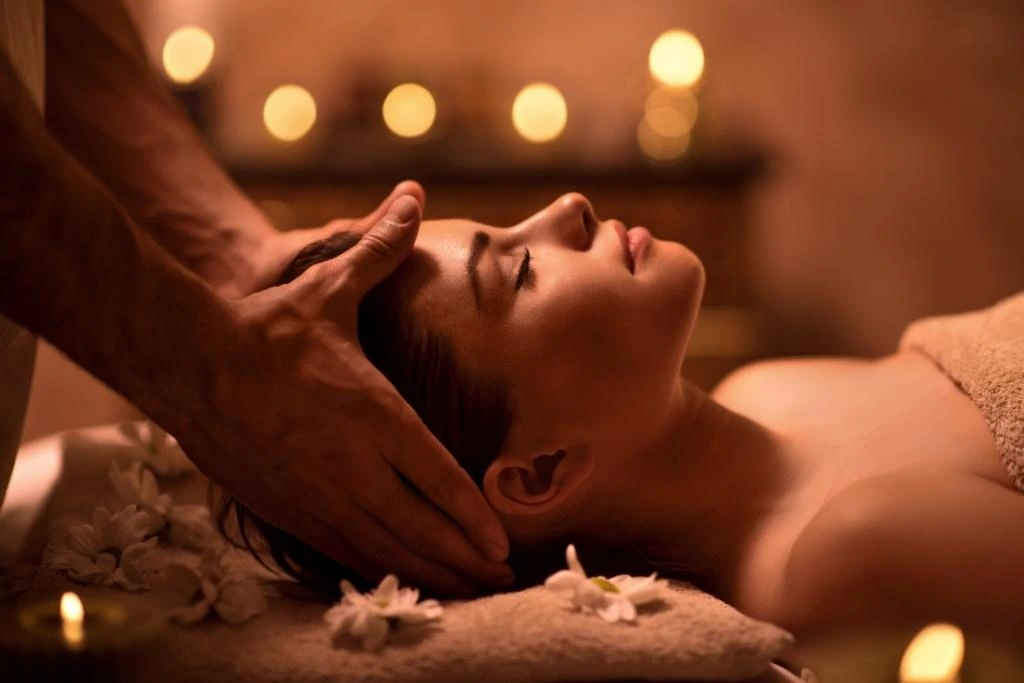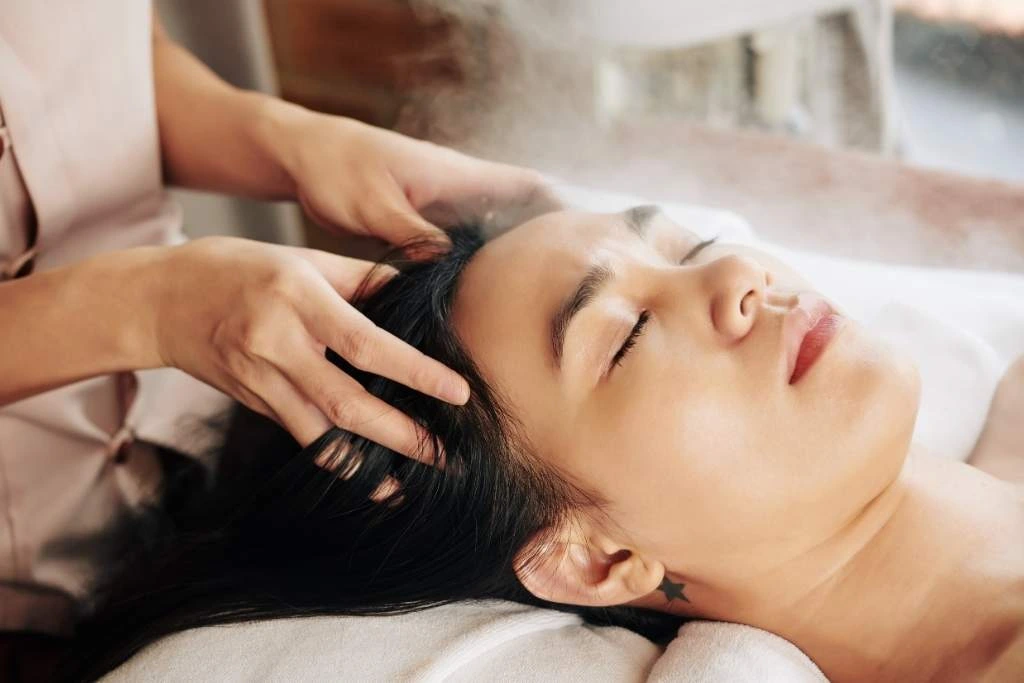Migraines aren’t your typical headaches.
They come with throbbing pain, usually on one side of the head. You may also feel nausea, sensitivity to light or sound, and even dizziness.
These attacks can last for hours or even days. Many people lose productivity, sleep, and quality of life.
The cause? Still unclear. But researchers point to brain chemistry, hormones, and nervous system triggers. Stress, lack of sleep, posture, and even weather changes can spark a migraine attack.
That’s where massage therapy enters the conversation. Massage therapy for migraine has been shown to help alleviate symptoms and provide effective pain relief.
What Is Massage Therapy? A Quick Breakdown
Massage therapy is the manipulation of soft tissues; in other words, muscle, tendon, and ligament.
There are different types:
- Swedish (smooth and relaxing)
- Deep tissue massage (works on deeper layers of muscle)
- Trigger point massage (deals with tight knots of muscles)
- Myofascial release (releases tight connective tissue)
Each of them can contribute to relieving headache pain.
But how? Let’s break it down.
How Massage Therapy Targets Migraine Pain
Massage does more than just feel good.
It triggers physical and chemical changes in the body that directly impact migraines. Here’s how:

1. Reduces Muscle Tension
Tight neck pain and shoulder muscles are common migraine triggers.
Massage therapy helps
- Loosen stiff muscles
- Improve blood flow
- Restore range of motion
This takes the strain off the head and neck area, an important focus for migraine pain. Massage on the neck is especially beneficial for migraine patients.
2. Improves Blood Circulation
Better circulation means more oxygen and nutrients reach your brain.
This helps:
- Flush out toxins
- Lower inflammation
- Reduce pain signals
3. Balances Stress Hormones
High stress = high cortisol levels = more migraines.
Massage helps lower cortisol and boosts serotonin and dopamine, your feel-good hormones. This can relieve headaches and reduce their intensity.
4. Calms the Nervous System
Massage also stimulates the parasympathetic nervous system. This element relaxes the body, brings down the heart rate, and reduces overstimulation that can lead to a migraine attack.
Best Massage Techniques for Migraine Relief
Massage is not a universal migraine remedy. Below are the best techniques that work well:
Trigger Point Massage
Focuses on tight muscle “knots” that refer pain to the head.
Great for:
- Tension-type migraines
- Neck and shoulder stiffness
Myofascial Release
Releases tight fascia (connective tissue) that can restrict blood flow.
Useful for:
- Chronic migraine sufferers
- People with poor posture
Craniosacral Therapy
Gentle touch around the skull and spine to balance cerebrospinal fluid.
Ideal for:
- Sensitive patients
- Migraines triggered by nervous system imbalances
When to Get a Massage for Migraine Relief
Timing is everything.
Massage therapy works best when:
- You feel tension building before a migraine.
- You’re in the recovery phase after a migraine.
- You want to prevent migraines long-term.
Avoid massages during an active migraine headache if the pain is intense; it might feel too stimulating.
Instead, schedule regular sessions to reduce the frequency of migraines and migraine intensity.

Home Techniques: DIY Massage Tips
Can’t see a therapist? You can still try a massage at home.
Try These Steps:
- Use your fingertips to gently press your temples in small circles.
- Apply pressure to the base of your skull (occipital area).
- Roll your shoulders and stretch your neck slowly.
- Use a tennis ball or a massage gun for tight spots in your shoulders.
Just 10 minutes a day can reduce muscle tightness and tension, offering some migraine relief.
Benefits Beyond Migraine Relief
Massage therapy doesn’t just ease migraines. It improves overall health.
Here’s what else you get:
- Better sleep
- Improved mood
- Lower anxiety
- Boosted immune system
- Reduced blood pressure
Your body heals better when it’s relaxed and pain-free.
Precautions: Who Should Be Careful with Massage?
Massage is generally safe, but not for everyone.
Avoid it if you have:
- Open wounds or bruises
- Recent surgery or injury
- Blood clotting disorders
- Severe osteoporosis
- Infectious skin conditions
Always speak to a doctor first, particularly if your migraines are new, severe, or associated with other signs and symptoms such as loss of vision or slurred speech. Massage therapists who are aware of migraine triggers can dispense useful recommendations.
FAQ: Massage and migraine
How can a massage therapist help with migraines?
The focus of a massage therapist is tension areas, particularly in the neck and shoulders. Its work provides relief from migraine pain and discomfort.
Here’s how:
- Unwind muscle knots: Tackle tight muscles that trigger migraines.
- Frees cramped neck and shoulder: Loosens tightness that can result in aches.
- Circulation: Increase blood flow to aid the symptoms of a migraine.
- Soothe the system: Relaxation techniques that stop migraine attacks.
- Encourage relaxation: Get rid of tension and relieve headaches.
What are the best types of massage for migraine relief?
The following are some of the best massages for migraine relief:
- Trigger-point massage: Trigger-point massage specializes in stiff muscle knots that trigger migraines.
- Myofascial release: Alleviates connective tissue tension, enhancing circulation.
- Craniosacral therapy: Balances the cerebrospinal fluid gently, alleviating headache symptoms.
This will decrease the tension in the muscles and improve the flow of blood in the body.
Can self-massage help alleviate migraine symptoms?
Indeed, migraine symptoms can also be relieved with the help of self-massage.
Here’s how:
- Put finger pressure on the temples and neck.
- Pressure point to relieve headache pain at the base of the skull.
- Gentle, soothing strokes to ease stress and alleviate tension.
This simple technique can alleviate migraine discomfort instantly, in addition to supporting relaxation.
What is the role of massage in migraine treatment?
The importance of massage therapy in migraine treatment
It helps by:
- Reducing tension in the neck and shoulder muscles
- Increasing the flow of blood reduces symptoms of migraine.
- Calming the nerves, stopping further assaults.
All these advantages help to reduce the occurrence of migraines and alleviate the symptoms.
Can traditional massage techniques help with migraines?
Traditional massage can be beneficial for migraines.
It works by:
- Reducing pain by relieving pressure from tension points.
- Encouraging energy circulation, easing migraine pain.
These methods gradually mitigate the aches and pains of the body and promote the relaxation of the body.
Final Thoughts: Can Massage Therapy Really Help Migraines?
Yes, it can, and not just temporarily.
Massage therapy offers a natural way to reduce migraine triggers and improve your body’s resilience. It’s not a one-time fix, but with consistent sessions and lifestyle changes, it can make a real difference.
Start small. Even a weekly 30-minute massage can help.
And don’t forget, hydration, sleep, and stress management go hand in hand with any treatment plan for migraine management.

